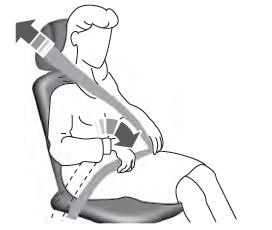Ford Escape: Fuel Charging and Controls / Diagnosis and Testing - Air/Fuel Ratio
Diagnostic Trouble Code (DTC) Chart
Diagnostics in this manual assume a certain skill level and knowledge of Ford-specific diagnostic practices.
REFER to: Diagnostic Methods (100-00 General Information, Description and Operation).
| Module | DTC | Description | Action |
|---|---|---|---|
| PCM | P0030:00 | HO2S Heater Control Circuit (Bank 1, Sensor 1): No Sub Type Information | GO to Pinpoint Test DW |
| PCM | P0030:00 | HO2S Heater Control Circuit (Bank 1, Sensor 1): No Sub Type Information | GO to Pinpoint Test DZ |
| PCM | P0036:00 | HO2S Heater Control Circuit (Bank 1, Sensor 2): No Sub Type Information | GO to Pinpoint Test DW |
| PCM | P0037:00 | HO2S Heater Control Circuit Low (Bank 1, Sensor 2): No Sub Type Information | GO to Pinpoint Test DW |
| PCM | P0038:00 | HO2S Heater Control Circuit High (Bank 1, Sensor 2): No Sub Type Information | GO to Pinpoint Test DW |
| PCM | P0040:00 | Oxygen Sensor Signals Swapped Bank 1 Sensor 1 / Bank 2 Sensor 1: No Sub Type Information | GO to Pinpoint Test DZ |
| PCM | P0041:00 | Oxygen Sensor Signals Swapped Bank 1 Sensor 2 / Bank 2 Sensor 2: No Sub Type Information | GO to Pinpoint Test DW |
| PCM | P0050:00 | HO2S Heater Control Circuit (Bank 2, Sensor 1): No Sub Type Information | GO to Pinpoint Test DZ |
| PCM | P0053:00 | HO2S Heater Resistance (Bank 1, Sensor 1): No Sub Type Information | GO to Pinpoint Test DW |
| PCM | P0053:00 | HO2S Heater Resistance (Bank 1, Sensor 1): No Sub Type Information | GO to Pinpoint Test DZ |
| PCM | P0054:00 | HO2S Heater Resistance (Bank 1, Sensor 2): No Sub Type Information | GO to Pinpoint Test DW |
| PCM | P0056:00 | HO2S Heater Control Circuit (Bank 2, Sensor 2): No Sub Type Information | GO to Pinpoint Test DW |
| PCM | P0059:00 | HO2S Heater Resistance (Bank 2, Sensor 1): No Sub Type Information | GO to Pinpoint Test DZ |
| PCM | P0060:00 | HO2S Heater Resistance (Bank 2, Sensor 2): No Sub Type Information | GO to Pinpoint Test DW |
| PCM | P00D2:00 | HO2S Heater Control Circuit Range/Performance (Bank 1 Sensor 2): No Sub Type Information | GO to Pinpoint Test DW |
| PCM | P0130:00 | O2 Sensor Circuit (Bank 1 Sensor 1): No Sub Type Information | GO to Pinpoint Test DW |
| PCM | P0130:00 | O2 Sensor Circuit (Bank 1 Sensor 1): No Sub Type Information | GO to Pinpoint Test DZ |
| PCM | P0131:00 | O2 Sensor Circuit Low Voltage (Bank 1 Sensor 1): No Sub Type Information | GO to Pinpoint Test DW |
| PCM | P0131:00 | O2 Sensor Circuit Low Voltage (Bank 1 Sensor 1): No Sub Type Information | GO to Pinpoint Test DZ |
| PCM | P0132:00 | O2 Sensor Circuit High Voltage (Bank 1 Sensor 1): No Sub Type Information | GO to Pinpoint Test DW |
| PCM | P0132:00 | O2 Sensor Circuit High Voltage (Bank 1 Sensor 1): No Sub Type Information | GO to Pinpoint Test DZ |
| PCM | P0133:00 | O2 Sensor Circuit Slow Response (Bank 1 Sensor 1): No Sub Type Information | GO to Pinpoint Test DW |
| PCM | P0133:00 | O2 Sensor Circuit Slow Response (Bank 1 Sensor 1): No Sub Type Information | GO to Pinpoint Test DZ |
| PCM | P0134:00 | O2 Sensor Circuit No Activity Detected (Bank 1 Sensor 1): No Sub Type Information | GO to Pinpoint Test DW |
| PCM | P0134:00 | O2 Sensor Circuit No Activity Detected (Bank 1 Sensor 1): No Sub Type Information | GO to Pinpoint Test DZ |
| PCM | P0135:00 | O2 Sensor Heater Circuit (Bank 1 Sensor 1): No Sub Type Information | GO to Pinpoint Test DW |
| PCM | P0135:00 | O2 Sensor Heater Circuit (Bank 1 Sensor 1): No Sub Type Information | GO to Pinpoint Test DZ |
| PCM | P0136:00 | O2 Sensor Circuit (Bank 1 Sensor 2): No Sub Type Information | GO to Pinpoint Test DW |
| PCM | P0137:00 | O2 Sensor Circuit Low Voltage (Bank 1 Sensor 2): No Sub Type Information | GO to Pinpoint Test DW |
| PCM | P0138:00 | O2 Sensor Circuit High Voltage (Bank 1 Sensor 2): No Sub Type Information | GO to Pinpoint Test DW |
| PCM | P0139:00 | O2 Sensor Circuit Slow Response (Bank 1 Sensor 2): No Sub Type Information | GO to Pinpoint Test DW |
| PCM | P013A:00 | O2 Sensor Slow Response - Rich to Lean (Bank 1 and Sensor 2): No Sub Type Information | GO to Pinpoint Test DW |
| PCM | P013B:00 | O2 Sensor Slow Response - Lean to Rich (Bank 1, Sensor 2): No Sub Type Information | GO to Pinpoint Test DW |
| PCM | P013C:00 | O2 Sensor Slow Response - Rich to Lean (Bank 2, Sensor 2): No Sub Type Information | GO to Pinpoint Test DW |
| PCM | P013E:00 | O2 Sensor Delayed Response - Rich to Lean (Bank 1 Sensor 2): No Sub Type Information | GO to Pinpoint Test DW |
| PCM | P0140:00 | O2 Sensor Circuit No Activity Detected (Bank 1 Sensor 2): No Sub Type Information | GO to Pinpoint Test DW |
| PCM | P0141:00 | O2 Sensor Heater Circuit (Bank 1 Sensor 2): No Sub Type Information | GO to Pinpoint Test DW |
| PCM | P014A:00 | O2 Sensor Delayed Response - Rich to Lean (Bank 2 Sensor 2): No Sub Type Information | GO to Pinpoint Test DW |
| PCM | P0150:00 | O2 Sensor Circuit (Bank 2 Sensor 1): No Sub Type Information | GO to Pinpoint Test DZ |
| PCM | P0151:00 | O2 Sensor Circuit Low Voltage (Bank 2 Sensor 1): No Sub Type Information | GO to Pinpoint Test DZ |
| PCM | P0152:00 | O2 Sensor Circuit High Voltage (Bank 2 Sensor 1): No Sub Type Information | GO to Pinpoint Test DZ |
| PCM | P0153:00 | O2 Sensor Circuit Slow Response (Bank 2 Sensor 1): No Sub Type Information | GO to Pinpoint Test DZ |
| PCM | P0154:00 | O2 Sensor Circuit No Activity Detected (Bank 2 Sensor 1): No Sub Type Information | GO to Pinpoint Test DZ |
| PCM | P0155:00 | O2 Sensor Heater Circuit (Bank 2 Sensor 1): No Sub Type Information | GO to Pinpoint Test DZ |
| PCM | P0157:00 | O2 Sensor Circuit Low Voltage (Bank 2 Sensor 2): No Sub Type Information | GO to Pinpoint Test DW |
| PCM | P0158:00 | O2 Sensor Circuit High Voltage (Bank 2 Sensor 2): No Sub Type Information | GO to Pinpoint Test DW |
| PCM | P0159:00 | O2 Sensor Circuit Slow Response (Bank 2 Sensor 2): No Sub Type Information | GO to Pinpoint Test DW |
| PCM | P0161:00 | O2 Sensor Heater Circuit (Bank 2 Sensor 2): No Sub Type Information | GO to Pinpoint Test DW |
| PCM | P016A:00 | Excessive Time To Enter Closed Loop Air/Fuel Ratio Control: No Sub Type Information | GO to Pinpoint Test DW |
| PCM | P0171:00 | System Too Lean Bank 1: No Sub Type Information | GO to Pinpoint Test H |
| PCM | P0172:00 | System Too Rich Bank 1: No Sub Type Information | GO to Pinpoint Test H |
| PCM | P0174:00 | System Too Lean Bank 2: No Sub Type Information | GO to Pinpoint Test H |
| PCM | P0175:00 | System Too Rich Bank 2: No Sub Type Information | GO to Pinpoint Test H |
| PCM | P064D:00 | Internal Control Module O2 Sensor Processor Performance - Bank 1: No Sub Type Information | GO to Pinpoint Test DZ |
| PCM | P064E:00 | Internal Control Module O2 Sensor Processor Performance - Bank 2: No Sub Type Information | GO to Pinpoint Test DZ |
| PCM | P1127:00 | Exhaust Temperature Out of Range, O2 Sensor Tests Not Completed: No Sub Type Information | GO to Pinpoint Test DZ |
| PCM | P1137:00 | Lack Of HO2S12 Switches - Sensor Indicates Lean: No Sub Type Information | GO to Pinpoint Test H |
| PCM | P1138:00 | Lack Of HO2S12 Switches - Sensor Indicates Rich: No Sub Type Information | GO to Pinpoint Test H |
| PCM | P1157:00 | Lack Of HO2S22 Switches - Sensor Indicates Lean: No Sub Type Information | GO to Pinpoint Test H |
| PCM | P1158:00 | Lack Of HO2S22 Switches - Sensor Indicates Rich: No Sub Type Information | GO to Pinpoint Test H |
| PCM | P1646:00 | Linear O2 Sensor Control Chip (Bank 1): No Sub Type Information | GO to Pinpoint Test DZ |
| PCM | P1647:00 | Linear O2 Sensor Control Chip (Bank 2): No Sub Type Information | GO to Pinpoint Test DZ |
| PCM | P164A:00 | O2 Sensor Positive Current Trim Circuit Performance (Bank 1 Sensor 1): No Sub Type Information | GO to Pinpoint Test DZ |
| PCM | P164B:00 | O2 Sensor Positive Current Trim Circuit Performance (Bank 2 Sensor 1): No Sub Type Information | GO to Pinpoint Test DZ |
| PCM | P2096:00 | Post Catalyst Fuel Trim System Too Lean Bank 1: No Sub Type Information | GO to Pinpoint Test DZ |
| PCM | P2097:00 | Post Catalyst Fuel Trim System Too Rich Bank 1: No Sub Type Information | GO to Pinpoint Test DZ |
| PCM | P2098:00 | Post Catalyst Fuel Trim System Too Lean Bank 2: No Sub Type Information | GO to Pinpoint Test DZ |
| PCM | P2099:00 | Post Catalyst Fuel Trim System Too Rich Bank 2: No Sub Type Information | GO to Pinpoint Test DZ |
| PCM | P2195:00 | O2 Sensor Signal Biased/Stuck Lean - Bank 1, Sensor 1: No Sub Type Information | GO to Pinpoint Test H |
| PCM | P2196:00 | O2 Sensor Signal Biased/Stuck Rich - Bank 1, Sensor 1: No Sub Type Information | GO to Pinpoint Test H |
| PCM | P2197:00 | O2 Sensor Signal Biased/Stuck Lean - Bank 2, Sensor 1: No Sub Type Information | GO to Pinpoint Test H |
| PCM | P2198:00 | O2 Sensor Signal Biased/Stuck Rich - Bank 2, Sensor 1: No Sub Type Information | GO to Pinpoint Test H |
| PCM | P219A:00 | Bank 1 Air-Fuel Ratio Imbalance: No Sub Type Information | GO to Pinpoint Test H |
| PCM | P219B:00 | Bank 2 Air-Fuel Ratio Imbalance: No Sub Type Information | GO to Pinpoint Test H |
| PCM | P219C:00 | Cylinder 1 Air-Fuel Ratio Imbalance: No Sub Type Information | GO to Pinpoint Test H |
| PCM | P219D:00 | Cylinder 2 Air-Fuel Ratio Imbalance: No Sub Type Information | GO to Pinpoint Test H |
| PCM | P219E:00 | Cylinder 3 Air-Fuel Ratio Imbalance: No Sub Type Information | GO to Pinpoint Test H |
| PCM | P219F:00 | Cylinder 4 Air-Fuel Ratio Imbalance: No Sub Type Information | GO to Pinpoint Test H |
| PCM | P21A0:00 | Cylinder 5 Air-Fuel Ratio Imbalance: No Sub Type Information | GO to Pinpoint Test H |
| PCM | P21A1:00 | Cylinder 6 Air-Fuel Ratio Imbalance: No Sub Type Information | GO to Pinpoint Test H |
| PCM | P2237:00 | O2 Sensor Positive Current Control Circuit/Open - Bank 1, Sensor 1: No Sub Type Information | GO to Pinpoint Test DZ |
| PCM | P2240:00 | O2 Sensor Positive Current Control Circuit/Open - Bank 2, Sensor 1: No Sub Type Information | GO to Pinpoint Test DZ |
| PCM | P2243:00 | O2 Sensor Reference Voltage Circuit/Open - Bank 1, Sensor 1: No Sub Type Information | GO to Pinpoint Test DZ |
| PCM | P2247:00 | O2 Sensor Reference Voltage Circuit/Open - Bank 2, Sensor 1: No Sub Type Information | GO to Pinpoint Test DZ |
| PCM | P2251:00 | O2 Sensor Negative Current Control Circuit/Open - Bank 1, Sensor 1: No Sub Type Information | GO to Pinpoint Test DZ |
| PCM | P2254:00 | O2 Sensor Negative Current Control Circuit/Open - Bank 2, Sensor 1: No Sub Type Information | GO to Pinpoint Test DZ |
| PCM | P2270:00 | O2 Sensor Signal Stuck Lean - Bank 1, Sensor 2: No Sub Type Information | GO to Pinpoint Test DW |
| PCM | P2270:00 | O2 Sensor Signal Stuck Lean - Bank 1, Sensor 2: No Sub Type Information | GO to Pinpoint Test H |
| PCM | P2271:00 | O2 Sensor Signal Stuck Rich - Bank 1, Sensor 2: No Sub Type Information | GO to Pinpoint Test DW |
| PCM | P2271:00 | O2 Sensor Signal Stuck Rich - Bank 1, Sensor 2: No Sub Type Information | GO to Pinpoint Test H |
| PCM | P2272:00 | O2 Sensor Signal Stuck Lean - Bank 2, Sensor 2: No Sub Type Information | GO to Pinpoint Test DW |
| PCM | P2272:00 | O2 Sensor Signal Stuck Lean - Bank 2, Sensor 2: No Sub Type Information | GO to Pinpoint Test H |
| PCM | P2273:00 | O2 Sensor Signal Stuck Rich - Bank 2, Sensor 2: No Sub Type Information | GO to Pinpoint Test DW |
| PCM | P2273:00 | O2 Sensor Signal Stuck Rich - Bank 2, Sensor 2: No Sub Type Information | GO to Pinpoint Test H |
| PCM | P2297:00 | O2 Sensor Out of Range During Deceleration Bank 1, Sensor 1: No Sub Type Information | GO to Pinpoint Test DW |
| PCM | P2626:00 | O2 Sensor Positive Current Trim Circuit/Open Bank 1 Sensor 1: No Sub Type Information | GO to Pinpoint Test DZ |
| PCM | P2627:00 | O2 Sensor Positive Current Trim Circuit Low Bank 1, Sensor 1: No Sub Type Information | GO to Pinpoint Test DZ |
| PCM | P2628:00 | O2 Sensor Positive Current Trim Circuit High Bank 1, Sensor 1: No Sub Type Information | GO to Pinpoint Test DZ |
| PCM | P2629:00 | O2 Sensor Positive Current Trim Circuit/Open Bank 2 Sensor 1: No Sub Type Information | GO to Pinpoint Test DZ |
| PCM | P2630:00 | O2 Sensor Positive Current Trim Circuit Low Bank 2, Sensor 1: No Sub Type Information | GO to Pinpoint Test DZ |
| PCM | P2631:00 | O2 Sensor Positive Current Trim Circuit High Bank 2, Sensor 1: No Sub Type Information | GO to Pinpoint Test DZ |
| PCM | P2A01:00 | O2 Circuit Range/Performance (Bank 1, Sensor 2): No Sub Type Information | GO to Pinpoint Test DW |
| PCM | P2A04:00 | O2 Circuit Range/Performance (Bank 2, Sensor 2): No Sub Type Information | GO to Pinpoint Test DW |
| PCM | P2BEC:00 | Fuel Control System 'A' Too Lean Bank 1: No Sub Type Information | GO to Pinpoint Test H |
| PCM | P2BED:00 | Fuel Control System 'A' Too Rich Bank 1: No Sub Type Information | GO to Pinpoint Test H |
| PCM | P2BEE:00 | Fuel Control System 'A' Too Lean Bank 2: No Sub Type Information | GO to Pinpoint Test H |
| PCM | P2BEF:00 | Fuel Control System 'A' Too Rich Bank 2: No Sub Type Information | GO to Pinpoint Test H |
| PCM | P2BF0:00 | Fuel Control System 'B' Too Lean Bank 1: No Sub Type Information | GO to Pinpoint Test H |
| PCM | P2BF1:00 | Fuel Control System 'B' Too Rich Bank 1: No Sub Type Information | GO to Pinpoint Test H |
| PCM | P2BF2:00 | Fuel Control System 'B' Too Lean Bank 2: No Sub Type Information | GO to Pinpoint Test H |
| PCM | P2BF3:00 | Fuel Control System 'B' Too Rich Bank 2: No Sub Type Information | GO to Pinpoint Test H |
Symptom Chart
| Symptom | Possible Sources | Action |
|---|---|---|
|
|
|
|
|
|
Pinpoint Tests
 PINPOINT TEST DW: HEATED OXYGEN SENSOR (HO2S)
PINPOINT TEST DW: HEATED OXYGEN SENSOR (HO2S).jpg)
 Introduction Introduction
Normal Operation and Fault Conditions Refer to the DTC Fault Trigger Conditions. DTC Fault Trigger Conditions
Possible Sources
|
 PINPOINT TEST DZ: UNIVERSAL HEATED OXYGEN SENSOR (HO2S)
PINPOINT TEST DZ: UNIVERSAL HEATED OXYGEN SENSOR (HO2S).jpg)
 Introduction Introduction
NOTE: Only diagnose the suspect universal HO2S indicated by the DTC. Normal Operation and Fault Conditions Refer to the DTC Fault Trigger Conditions. DTC Fault Trigger Conditions
Possible Sources
|
 PINPOINT TEST H: FUEL CONTROL
PINPOINT TEST H: FUEL CONTROL.jpg)
 Introduction Introduction
Normal Operation and Fault Conditions Refer to the DTC Fault Trigger Conditions. DTC Fault Trigger Conditions
Possible Sources
|
 Description and Operation - Fuel Charging and Controls - System Operation and Component Description
Description and Operation - Fuel Charging and Controls - System Operation and Component Description
System Operation
Air Fuel Ratio Imbalance Monitor
The air fuel ratio imbalance monitor is an on board diagnostic strategy designed to monitor the air fuel ratio...
 Diagnosis and Testing - Electronic Throttle Control System
Diagnosis and Testing - Electronic Throttle Control System
Diagnostic Trouble Code (DTC) Chart
Diagnostics in this manual assume a certain skill level and knowledge of Ford-specific diagnostic practices.REFER to: Diagnostic Methods (100-00 General Information, Description and Operation)...
Other information:
Ford Escape 2020-2025 Owners Manual: Refueling Your Vehicle - Hybrid Electric Vehicle (HEV)/Plug-In Hybrid Electric Vehicle (PHEV)
WARNING: When refueling always shut the engine off and never allow sparks or open flames near the fuel tank filler valve. Never smoke or use a cell phone while refueling. Fuel vapor is extremely hazardous under certain conditions. Avoid inhaling excess fumes...
Ford Escape 2020-2025 Service Manual: Removal and Installation - Brake Pedal and Bracket - Vehicles With: Vacuum Brake Booster
Removal NOTE: Removal steps in this procedure may contain installation details. Remove the cowl panel grille Refer to: Cowl Panel Grille (501-02 Front End Body Panels, Removal and Installation). Remove the 2 LH side (under hood) instrument panel bolts Torque: 35 lb...
Categories
- Manuals Home
- 4th Generation Ford Escape Owners Manual
- 4th Generation Ford Escape Service Manual
- Plug-In Hybrid Electric Vehicle Drive Modes
- General Procedures - Transmission Fluid Level Check
- Fuel Quality
- New on site
- Most important about car
Adjusting the Seatbelts During Pregnancy
WARNING: Always ride and drive with your seatback upright and properly fasten your seatbelt. Fit the lap portion of the seatbelt snugly and low across the hips. Position the shoulder portion of the seatbelt across your chest. Pregnant women must follow this practice. See the following figure.


.jpg) PINPOINT TEST DW: HEATED OXYGEN SENSOR (HO2S)
PINPOINT TEST DW: HEATED OXYGEN SENSOR (HO2S)

 Introduction
Introduction
.jpg) WARNING:
While conducting tests on a hot engine take all
safety precautions to prevent skin contact with hot engine components.
Failure to follow these instructions may result in personal injury.
WARNING:
While conducting tests on a hot engine take all
safety precautions to prevent skin contact with hot engine components.
Failure to follow these instructions may result in personal injury.